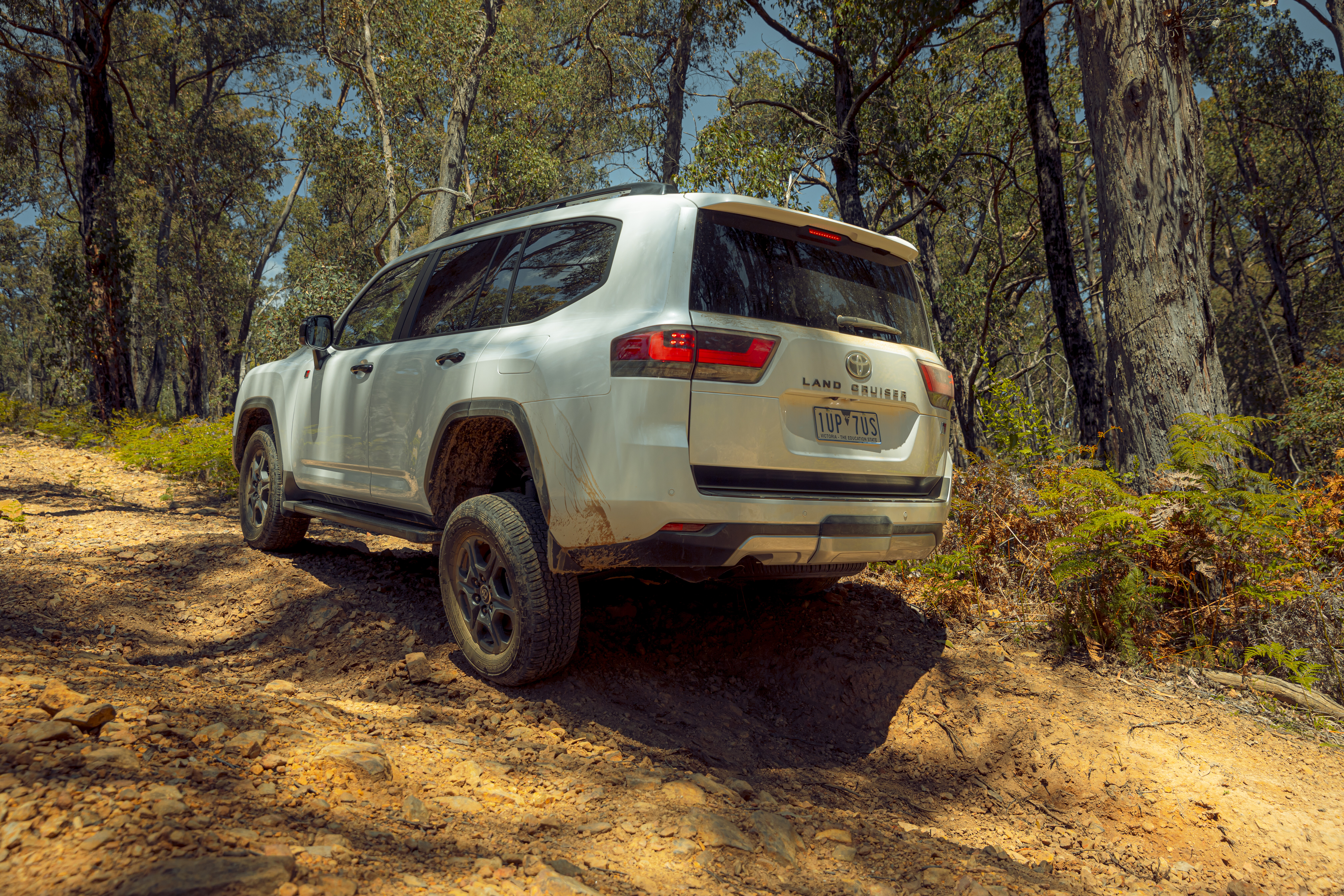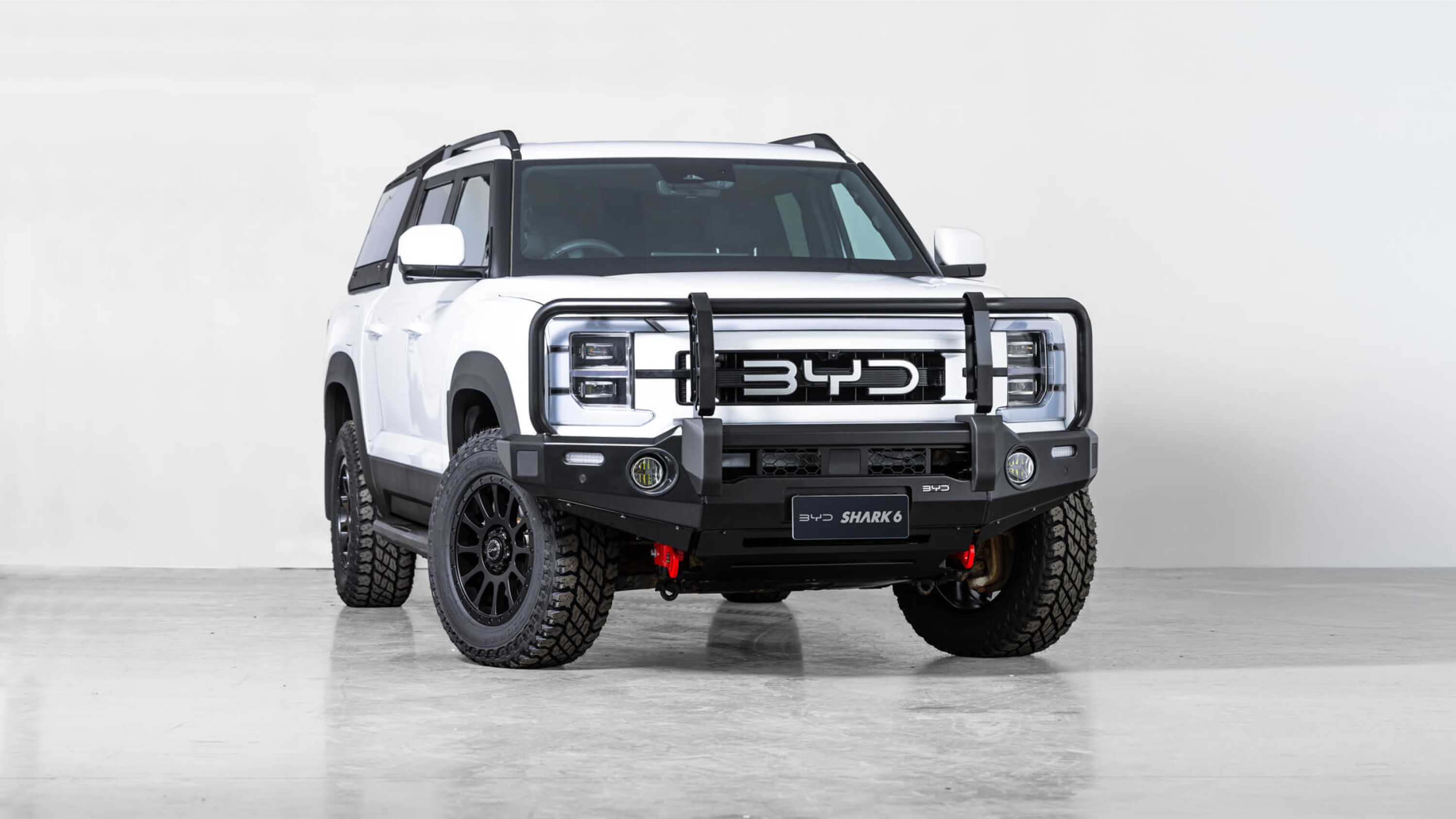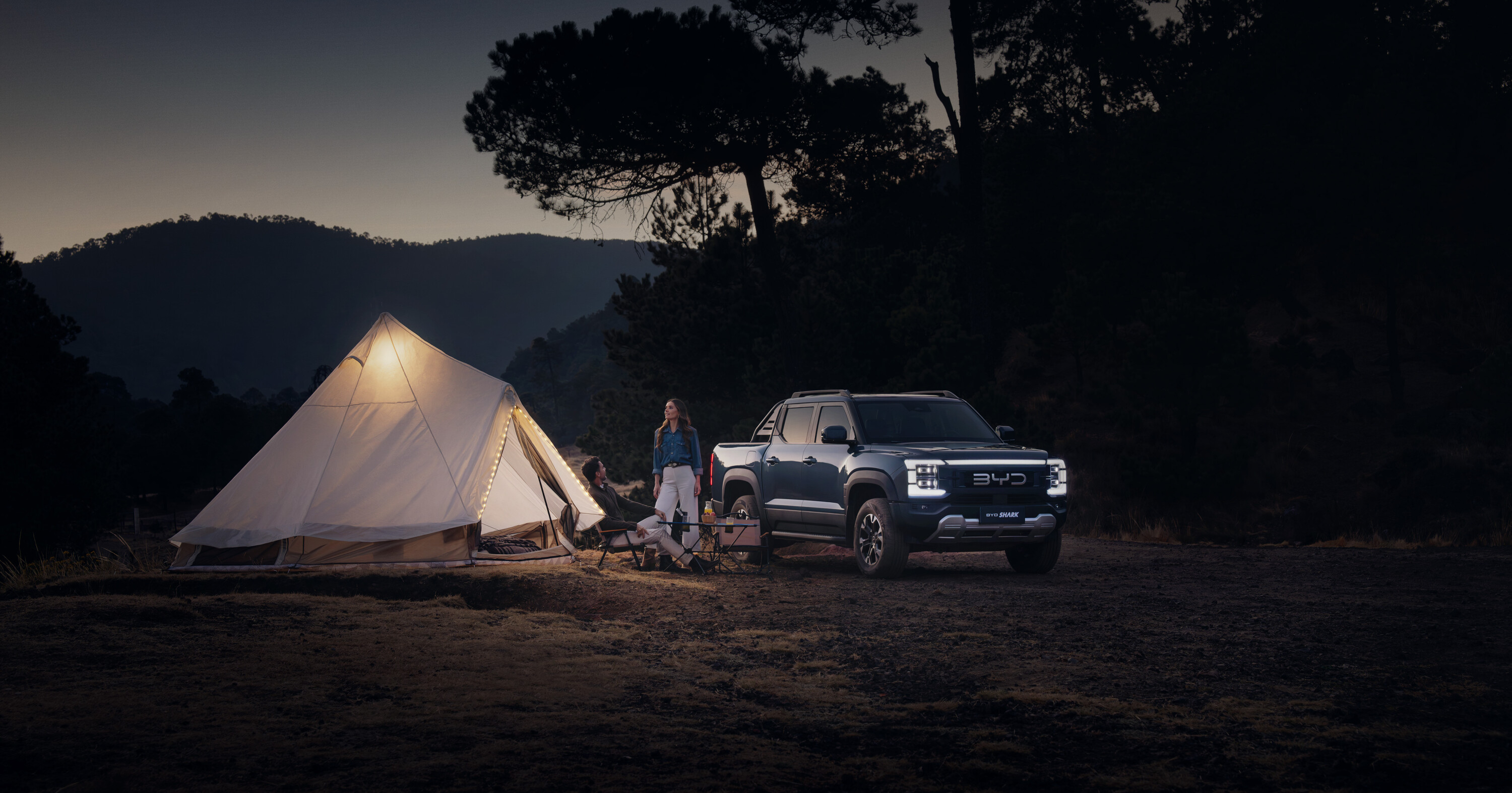Hands up anyone who thought that traditionally conservative Toyota would ever equip its iconic LandCruiser, the even more conservative bedrock upon which the company is built, with a leading-edge-technology 10-speed automatic transmission?
Or indeed equip it with an ultra-sophisticated sequential-parallel bi-turbo system, also at the pointy end of current diesel-engine tech? I certainly didn’t see any of this coming.Oh to be a fly on the wall in the numerous planning meetings that no doubt took place at Toyota HQ as engineers, marketers, bean counters and who knows whom else, nutted out the details of all this at the most difficult and uncertain time in the history of fossil-fuel burning cars. The end decision on this powertrain can’t be seen as anything but bold.
Toyota did, however, stay in its comfort zone with the general layout of the rest of the 300. Not only does it have a body mounted on top of a ladder frame, popularly known as separate-chassis construction, but it has a coil-sprung live axle at the rear and independent double-wishbone front suspension, also with coil springs. This is essentially the same arrangement as used by both the 200 and 100 Series LandCruisers, although the 300 does bring second-generation KDSS which is substantially different from the 200 Series’ KDSS.
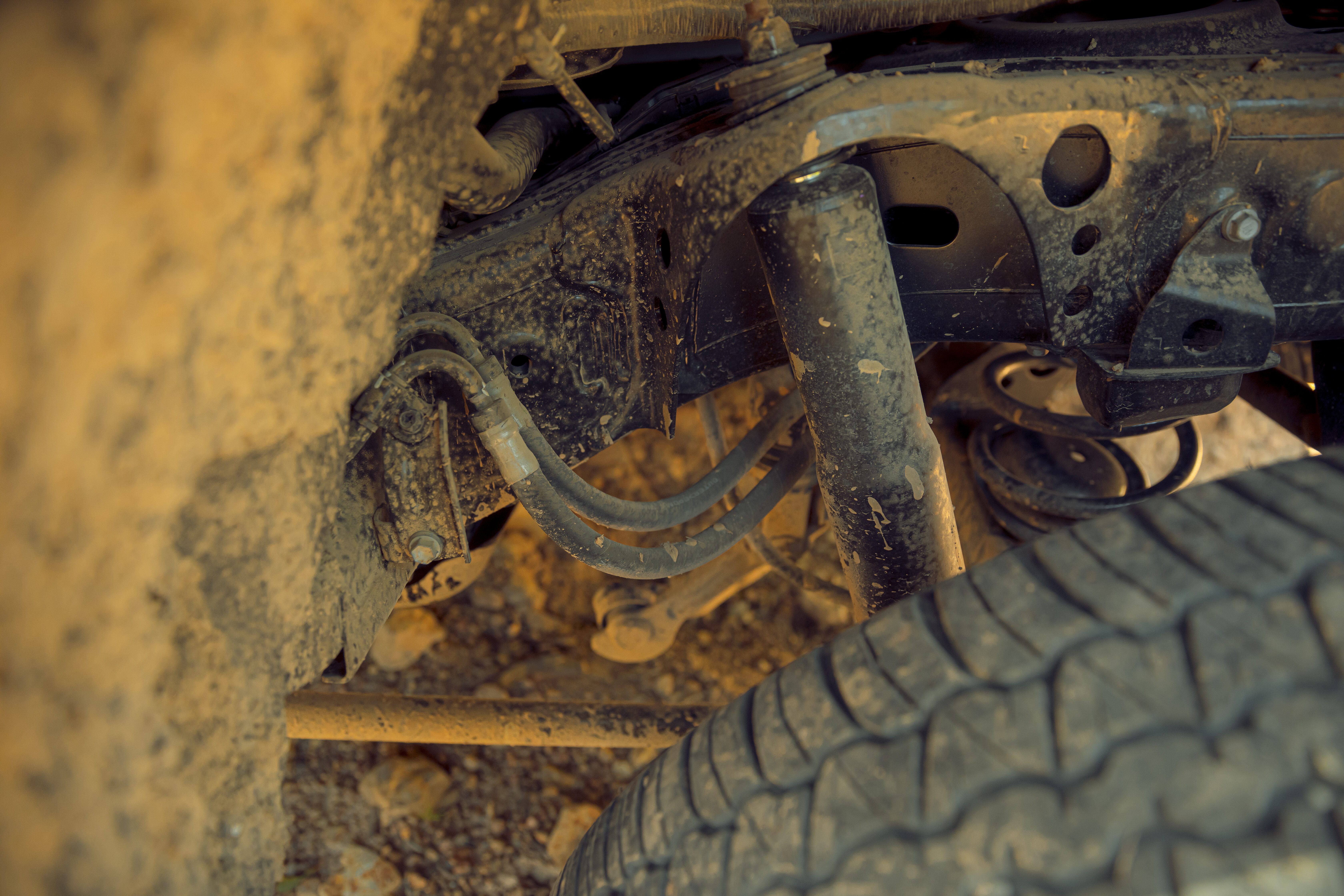
It could have even been different, of course. Toyota could have adopted monocoque construction or fully independent suspension, or both. And if it had of been as bold with the chassis as it was with the powertrain, that may have been the path chosen.Ironically, 300 Series prototypes were extensively benchmarked here in Australia as long ago as 2015 against both a Range Rover and the closely related Range Rover Sport, both monocoque 4x4s with fully independent suspension.
Toyota’s choice of separate-chassis rather than monocoque construction comes with good reason. Separating the body from the chassis isolates what’s happening with the tyres, wheel and suspension – all the noise and vibration – and limits its intrusion in to the cabin.
This is especially the case on high-speed gravel and other unsealed roads, which typically present noise and running refinement problems for monocoque vehicles. And while you may see the LandCruiser as just a tough and capable 4×4, Toyota also wants it to be a quiet and refined off-road limousine. The 300 wasn’t benchmarked against the Range Rover and RR Sport for nothing.A ladder frame, which accounts for most of the structural strength of a separate-chassis vehicle, also means this critical weight is placed low, which improves – among other things – the off-road side-sloping stability. With the 300, while the body shell is fabricated from various-grade steels, the exterior body panels are made from lighter aluminium alloy.
The pros and cons of the 300’s suspension versus a fully independent arrangement as per the aforementioned RR and RR S comes down to what’s happening at the rear, as the front is essentially the same.The major benefit of a rear live axle over an independent set-up is that there’s no change in ground clearance under the differential regardless of what the wheels are doing. Changeable ground clearance is, however, a problem with independent suspension.
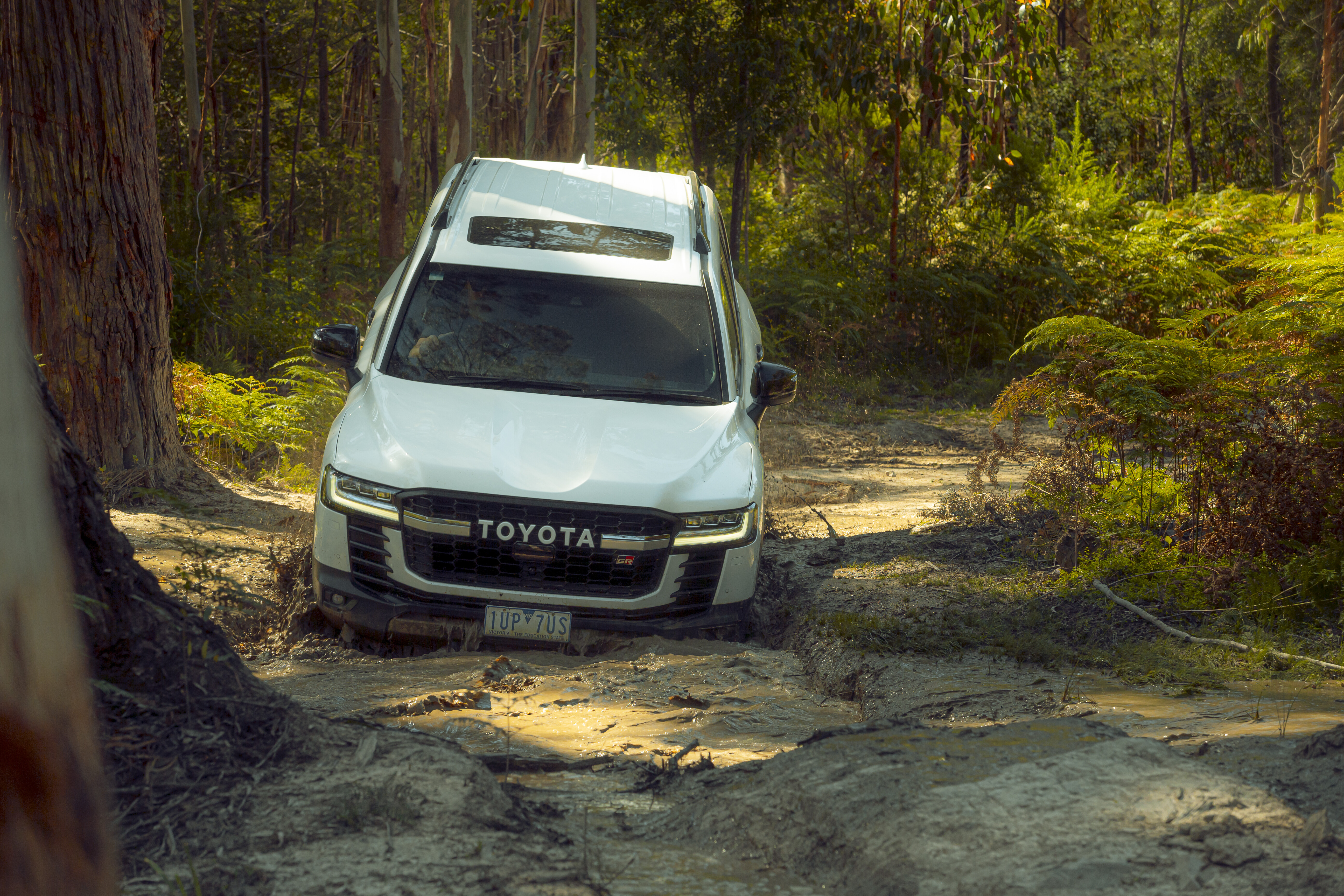
The live axle’s exterior casting also protects the drive axles from damage, and there’s no need for CV or universal joints. So both simpler and more robust, both attributes that Toyota values.The downside of a live axle compared to independent suspension is more unsprung weight, while a road disturbance to either wheel effects the wheel on the other side of the axle. There’s also some bump-steer as the axle (located by a Panhard rod, as it is with the 300) moves slightly sideways back and forth as it moves up and down in response to road irregularities.A vehicle with rear independent suspension isn’t afflicted by any of this. Drive any of Land Rover’s serious 4x4s – from the Defender up – on a bumpy road, especially at higher speeds, and you can’t help but notice the difference. Ironically, Toyota has experience with a fully independent suspension on a serious 4×4. It’s called the Mega Cruiser. Perhaps next time …

